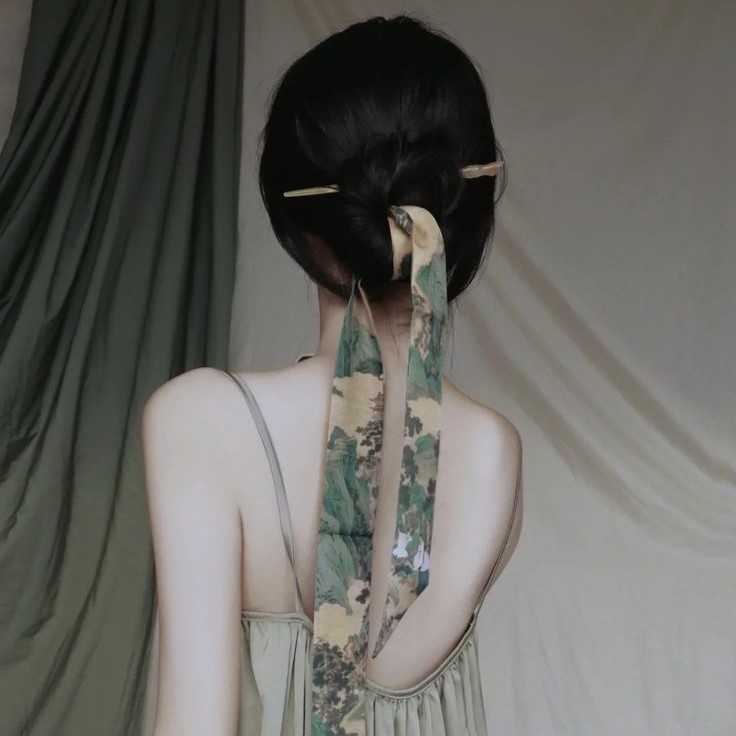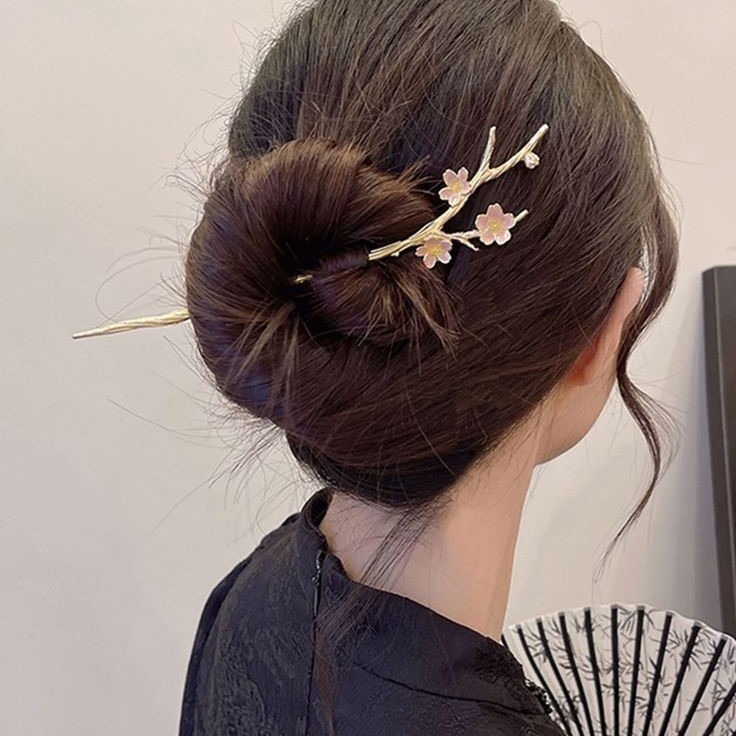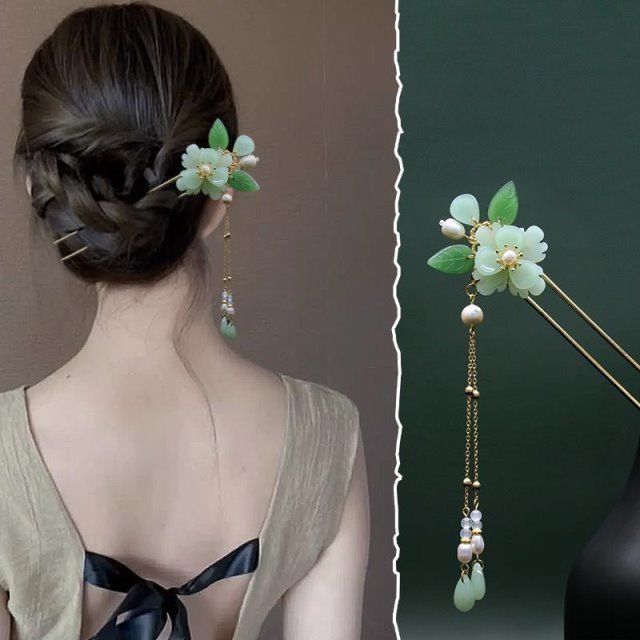What Are Chinese Hair Sticks Called?
Chinese hair sticks, also known as “hairpins” or “zanzhu,” are an integral part of traditional Asian hairstyling. These decorative tools have been used for centuries to secure and enhance hairstyles while showcasing intricate designs. They come in various materials such as wood, jade, metal, and even ivory. Their versatility makes them suitable for both casual and formal occasions. From elaborate ceremonial styles to simple everyday looks, these hair accessories offer endless possibilities. As we explore further into their history and uses, you’ll understand why they remain popular today.
Transitioning from their origins to modern-day applications, let’s delve deeper into what gives these sticks their unique appeal. For instance, did you know that each material has its own symbolic meaning? This aspect adds depth to their role beyond mere functionality. Jade, often associated with purity and prosperity, is one of the most prized materials for crafting hairpins. Meanwhile, metals like silver and gold symbolize wealth and power. Understanding these nuances enriches the experience of using Chinese hair sticks.

Moreover, the craftsmanship behind these accessories is nothing short of extraordinary. Skilled artisans spend years mastering techniques passed down through generations. The attention to detail ensures every piece is not just functional but also a work of art. Whether it’s the delicate carvings on wooden pins or the intricate patterns etched onto metal ones, each stick tells a story. This blend of tradition and creativity continues to captivate people worldwide.
The History Behind Chinese Hair Sticks
The journey of Chinese hair sticks dates back thousands of years. Archaeological evidence suggests that early versions were made from natural materials like bones and twigs. Over time, artisans refined their craftsmanship, introducing metals and precious stones. During dynasties like Tang and Song, hairpins became symbols of status and beauty. Wealthier individuals adorned themselves with elaborate pieces crafted by skilled artisans.
In the Tang Dynasty, hairstyles reached new heights of complexity, featuring towering buns held together by multiple hairpins. These arrangements weren’t just fashionable; they conveyed messages about the wearer’s identity. For example, married women wore specific hairstyles that included ornate hairpins, distinguishing them from unmarried counterparts. Similarly, royal court members flaunted extravagant designs to signify their elevated positions.
As society evolved, so did the design of hairpins. In the Ming Dynasty, filigree techniques gained prominence, allowing for finer details and more intricate patterns. Artists began incorporating floral motifs, mythical creatures, and calligraphy into their creations. These advancements solidified the importance of hairpins in Chinese culture, transforming them from practical tools into cherished heirlooms.
Additionally, regional variations emerged over time. Southern provinces favored lightweight bamboo pins adorned with painted landscapes, while northern areas preferred heavier silver pieces engraved with geometric shapes. Such diversity reflects the rich tapestry of traditions across China, making each region’s hairpins distinct yet equally fascinating.

Cultural Significance of Hairpins
Beyond aesthetics, Chinese hair sticks carry profound cultural meanings. In traditional societies, hairstyles often indicated one’s marital status, age, or social standing. Unmarried women typically wore loose braids or simple updos secured with modest pins. Married women, however, opted for more elaborate arrangements featuring multiple sticks arranged symmetrically. This distinction helped others quickly identify key aspects of a person’s life stage.
Furthermore, certain ceremonies required specific hairstyles accompanied by designated hair accessories. Weddings, festivals, and ancestral rites all featured unique combinations meant to honor tradition. Even today, brides incorporate heirloom hairpins passed down through generations during wedding preparations. By preserving these traditions, families maintain connections to their heritage.
Hairpins also played a crucial role in religious practices. Temples frequently housed collections of exquisite hairpins donated by devotees seeking blessings. These offerings symbolized gratitude and devotion, reinforcing the spiritual dimension of these accessories. Additionally, some monks and nuns used plain wooden pins as reminders of humility and simplicity. Thus, whether secular or sacred, hairpins served multiple purposes throughout history.
How to Choose the Right Hairpin
Selecting the perfect Chinese hair stick involves considering several factors. First, assess your hair type and length. Thicker hair may require sturdier options, while finer textures benefit from lighter ones. Second, think about the occasion. Formal events call for ornate designs, but casual outings allow for simpler choices.
Material selection plays a significant role in determining suitability. Jade and gold-plated varieties exude luxury, making them ideal for special occasions. On the other hand, bamboo or wooden options provide a natural look perfect for everyday use. Some people prefer customizable items allowing personalization through engraving names or dates. This level of customization enhances sentimental value, turning ordinary accessories into meaningful keepsakes.
Another consideration is size and shape. Longer pins suit voluminous hairstyles, whereas shorter ones complement sleeker looks. Curved designs offer flexibility when styling complex buns, while straight pins excel at holding strands in place. Experimenting with different types helps determine which works best for individual needs.

Lastly, don’t overlook color coordination. Matching hairpins to outfits creates cohesive ensembles enhancing overall appearance. Neutral tones like black and brown pair easily with any attire, while vibrant hues add pops of color to monochromatic schemes. With so many options available, finding the right match depends on personal preference and intended purpose.
Styling Tips for Modern Looks
Incorporating Chinese hair sticks into contemporary hairstyles is easier than ever. Start with basic buns or chignons, securing strands neatly with a single pin. Experiment with layering multiple sticks at varying angles for added dimension. Braided hairstyles also pair beautifully with these accessories, offering texture contrast.
One popular technique involves creating asymmetrical focal points. Instead of placing pins symmetrically, try positioning them off-center to draw attention to specific areas. This method works particularly well with half-up styles, where only portions of the hair need securing. Another trick is combining different types of pins within the same hairstyle. For example, use a large ornate piece for visibility and smaller complementary ones for stability.
For those new to hairstyling, watching tutorial videos provides valuable guidance. Step-by-step instructions catered to beginners simplify the learning process, ensuring success from the start. Remember, practice enhances confidence when experimenting with new methods. With patience and creativity, anyone can master this art form regardless of skill level.
Additionally, embrace experimentation without fear of failure. Sometimes unexpected combinations yield stunning results. Let intuition guide decisions, trusting instincts to create personalized looks. After all, fashion thrives on innovation and self-expression.
Benefits of Handcrafted Hair Accessories
Handcrafted Chinese hair sticks stand out due to their uniqueness and quality. Each piece tells a story about the artisan who created it, ensuring no two items are identical. Unlike mass-produced alternatives, handmade versions prioritize durability and attention to detail. Every curve, carving, and finish undergoes meticulous refinement before completion.
For environmentally conscious consumers, choosing sustainable materials becomes increasingly important. Many craftspeople now focus on eco-friendly practices reducing waste without compromising beauty. Bamboo, recycled metals, and biodegradable resins serve as viable alternatives to traditional materials. Supporting small businesses producing authentic goods contributes positively to global communities.

Artisans often infuse personal touches into their creations, adding emotional resonance to each piece. A signature pattern, a favorite motif, or a hidden message might appear subtly within the design. These elements connect users directly to the maker, fostering appreciation for human craftsmanship in an increasingly automated world. Furthermore, purchasing handcrafted products supports local economies and preserves dying traditions.
Where to Buy Authentic Pieces
Finding genuine Chinese hair sticks requires careful consideration. Reputable online retailers specializing in cultural goods provide reliable sources. Look for reviews verifying authenticity and craftsmanship before purchasing. Local markets and specialty stores also offer opportunities to examine products firsthand.
When shopping online, ensure websites clearly state origin details and material composition. High-resolution images help gauge quality accurately. Don’t hesitate to ask questions regarding sourcing and production processes. Building relationships with trusted vendors ensures satisfaction and repeat business.
Some platforms feature direct communication channels connecting buyers with artisans. This interaction allows for custom orders tailored to specific requirements. Discussing preferences openly leads to better outcomes, resulting in pieces perfectly suited to individual tastes. Additionally, participating in cultural fairs or exhibitions introduces potential customers to talented creators showcasing their work live.
Conclusion: Embrace Ancient Elegance Today
Chinese hair sticks continue bridging past and present through timeless elegance. Whether celebrating cultural roots or enhancing daily appearances, these versatile accessories serve countless purposes. Understanding their history, selecting appropriate styles, and applying creative techniques enriches experiences significantly.
Returning to our original keyword, remember that “chinese hair sticks” represent much more than functional tools—they embody artistic expression and cultural pride. So next time you style your hair, consider adding a touch of ancient grace with these remarkable pieces. Let us preserve and celebrate this legacy together!

By embracing the beauty and functionality of Chinese hair sticks, we honor centuries of tradition while embracing modern trends. Let this journey inspire curiosity and admiration for the artistry behind these humble yet powerful accessories.